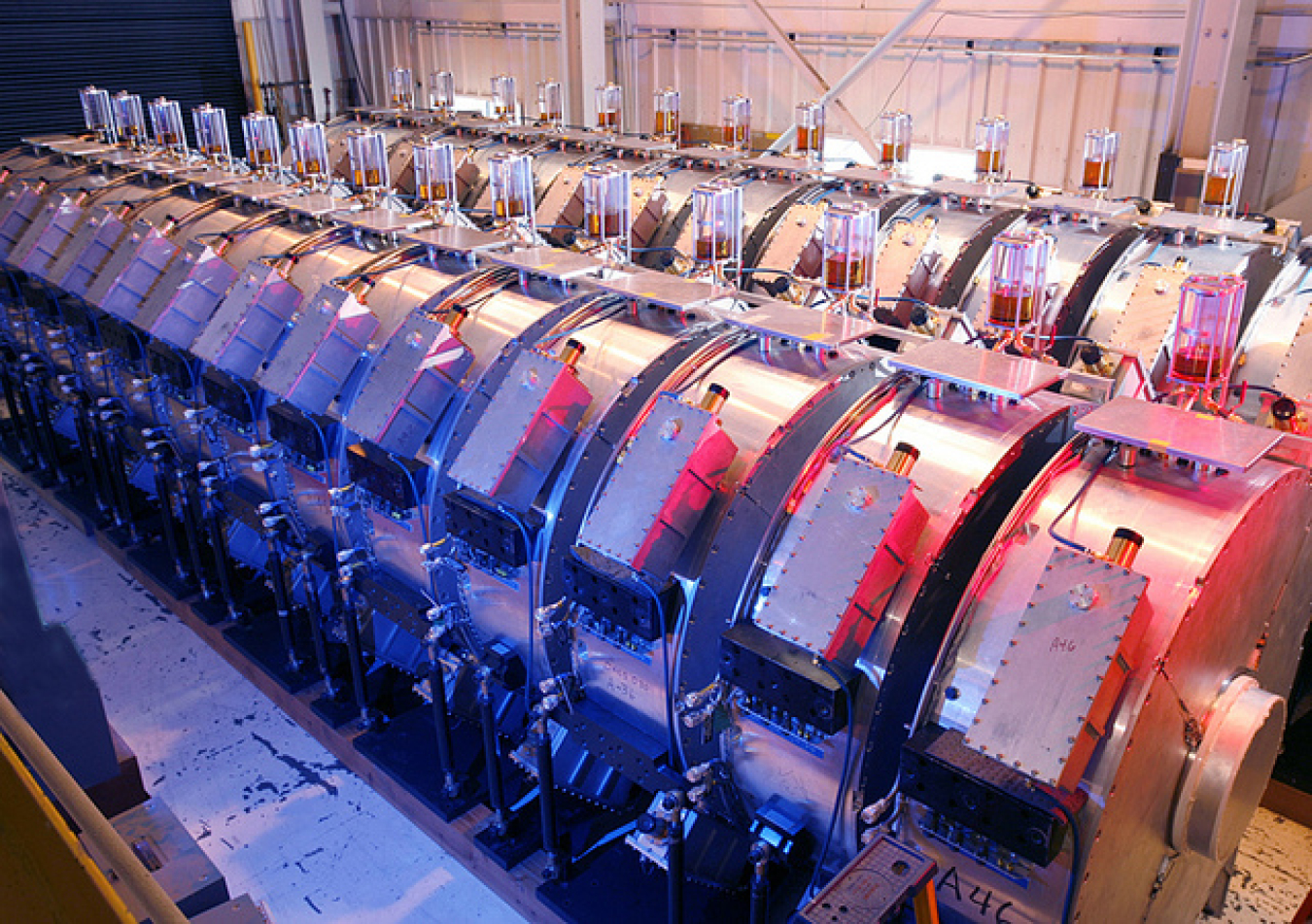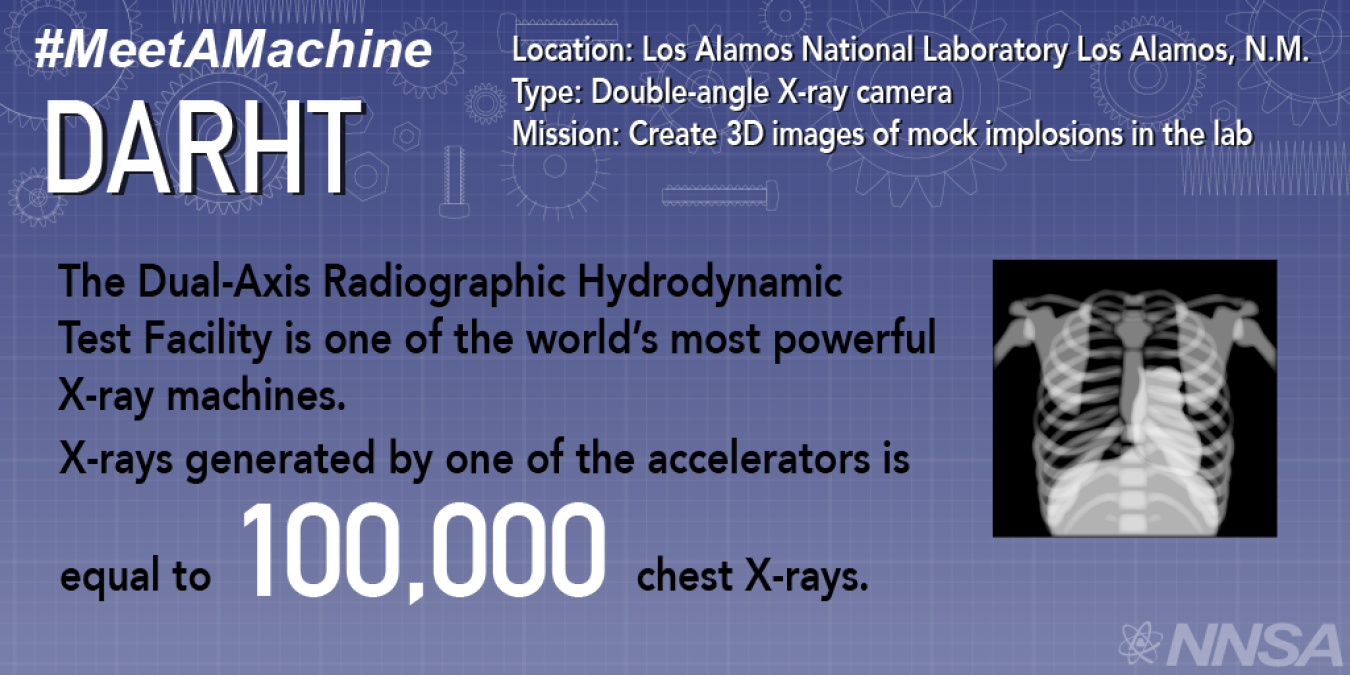
NNSA maintains and enhances the safety, security, and effectiveness of the U.S. nuclear weapons stockpile without nuclear explosive testing; works to reduce the global danger from weapons of mass destruction; provides the U.S. Navy with safe and effective nuclear propulsion; and responds to nuclear and radiological emergencies in the U.S. and abroad. These vital missions are why the U.S. nuclear security enterprise is home to the most brilliant minds and cutting-edge technologies for extreme physics and energy science. This week learn about one of the members of NNSA’s family of capabilities.
DARHT, the Dual-Axis Radiographic Hydrodynamic Test Facility, is a critical component of the NNSA Science Based Stockpile Stewardship Program. DARHT gives researchers at Los Alamos National Laboratory real-world validation of nuclear simulations to ensure the safety, security, and effectiveness of nuclear weapons in our nation’s enduring stockpile. The experiments, called hydrotests, begin with two long electron accelerators arranged in an “L” shape. Magnetic fields are created which focus and steer a stream of electrons down its length. Tremendous electrical energy is added along the way. When these high-speed electrons, combined with the electrical energy, hit tungsten targets at the end of each leg of the “L” they are converted to X-rays intersecting at a firing point. This intense X-ray burst allows scientists to create dual-angle digital images – and subsequently 3D models – of mock nuclear devices as they implode. The compilation of this data, and data from other scientific machines across the NNSA complex, allows scientists to continue to assess and certify the nation’s nuclear stockpile without having to conduct full-scale underground nuclear weapons testing.
Interesting fact:
Despite the enormous energy required for producing radiographic photos, the DARHT experts maintain such a safe environment that field mice living near the facility for years were tested and found to be unaffected.

